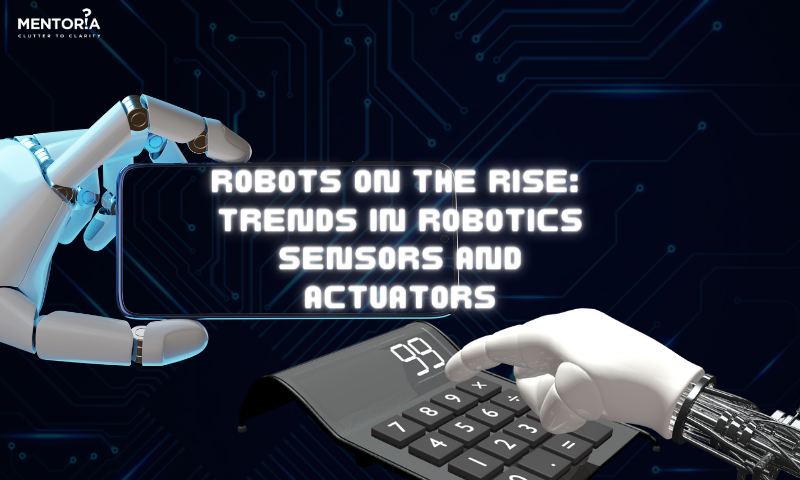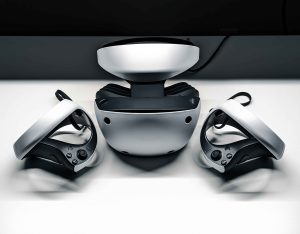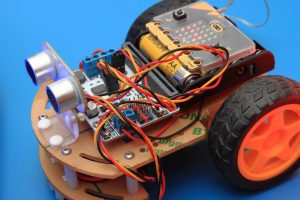Robots On The Rise: Trends In Robotics Sensors And Actuators

The future of robotics is bright, and it’s all thanks to the sensors and actuators that power these machines. Sensors allow robots to see, hear, feel, and taste the world around them, while actuators allow them to move and interact with objects. As these technologies continue to advance, robots will become more sophisticated and capable. These technologies are opening up new possibilities for robots to improve our lives, and it will be interesting to see how they are used in the years to come. In the future, robots may be so sophisticated that they will be able to write their own articles on the future of robotics. But until then, we’ll have to do it for them.
Smart Sensors – The Eyes And Ears Of Robots
The Visionaries: 3D Sensing And Depth Perception
Picture robots with the gift of sight akin to humans! Smart sensors with 3D vision and depth perception are revolutionising how robots perceive their surroundings. With these advanced sensors, robots can navigate complex terrains, detect obstacles with precision, and even engage in immersive virtual experiences. Robots equipped with 3D sensors can accurately scan environments, enabling them to navigate complex terrains and avoid obstacles effortlessly. Global 3D Sensor Market was valued at USD 3.125 Billion in 2021 and expected to reach USD 14.68 Billion by 2028 with the CAGR of 24.73%
Object Recognition: Robots That Know What They See
Ever wished robots could identify objects as effortlessly as we do? Well, that’s becoming a reality! Object recognition sensors equip robots with the ability to discern and classify various objects, such as fruits or familiar faces.Whether it’s differentiating between fruits or recognizing familiar faces, robots are mastering the art of visual perception. The global image recognition market size is projected to grow from $43.60 billion in 2023 to $134.41 billion by 2030, at a CAGR of 17.4%
Haptic Feedback – A Touch Of Realism
Embracing The Sense Of Touch: Haptic Sensors And Actuators
Beyond sight and sound, robots are embracing the sense of touch with haptic feedback. Haptic sensors and actuators allow robots to simulate tactile interactions, mimicking the sensation of touch. From delicate handling of fragile items to performing intricate surgeries, haptic feedback brings robots closer to human-like sensitivity. The Global haptic technology market is expected to reach USD 4.6 billion by 2026, growing at a CAGR of 12.0% during the forecast period, with its applications expanding across industries.
Remote Touch Interactions: A Virtual Touch
Imagine the thrill of feeling objects in a virtual world! Haptic feedback enables remote touch interactions, allowing users to “feel” and manipulate objects from afar. This groundbreaking technology finds applications in telemedicine, virtual reality, and even online shopping, making our interactions with robots more lifelike and immersive. The global Augmented Reality and Virtual Reality market is expected to reach a staggering $766 billion by 2025, at a growth rate of 73.7%
Soft Robotics – The Art Of Flexibility
The Rise Of Soft Actuators: Emulating Natural Movements
Bid farewell to rigid robots, and welcome the era of soft robotics! Soft actuators, inspired by nature, replicate organic movements and flexibility. Robots adorned with soft actuators can manoeuvre through tight spaces, interact safely with humans, and even bend and stretch like their biological counterparts. Soft actuators allow robots to perform delicate tasks, such as intricate surgeries, safely interacting with humans. Data Bridge Market Research analyses the soft robotics market will exhibit a CAGR of 40.2% in the forecast period of 2021 to 2028 and will reach USD 6,809.87 million by 2028.
Soft Grippers – A Gentle Touch
Say goodbye to clunky mechanical hands! Soft grippers are changing the game with their gentle touch and adaptability. These soft appendages delicately pick up and handle objects without damaging them. From fragile eggs to delicate fabrics, soft grippers are redefining the possibilities of robotic interactions. Soft grippers delicately handle objects like fragile eggs or delicate fabrics. The global robotic gripper market was valued at ~ US$ 1.6 billion in 2022 and is projected to increase at a CAGR of ~ 9.8%
Biomimicry – Learning from Nature’s Designs
Taking Inspiration From Nature: Biomimetic Robotics
Who needs reinvention when nature has perfected designs over billions of years? Biomimetic robotics draws inspiration from the natural world, emulating the flight of birds, movements of snakes, and even the agility of insects. By learning from nature’s blueprints, robots gain efficiency, resilience, and a touch of elegance. The market for biomimetic robots is forecasted to reach $18.50 Billion by 2028.
Wings Of Robotics: Bird-Inspired Flight
Feast your eyes on robots that soar through the air like birds! Winged robots, inspired by avian flight, are conquering the skies with grace and manoeuvrability. From monitoring wildlife to inspecting remote areas, bird-inspired robots are taking surveillance and exploration to new heights. Winged robots inspired by avian flight excel in wildlife monitoring and remote area inspections. The drone software market is projected to grow from USD 5.1 Billion in 2022 to USD 11.2 Billion by 2027, at a CAGR of 17.1%
Brain-Computer Interfaces – Mind-Reading Robots
Imagine controlling robots with just your thoughts! Brain-Computer Interfaces (BCIs) are forging new paths in human-robot interaction. These cutting-edge interfaces bridge the gap between the human brain and machines, enabling users to control robots through neural signals. BCIs are empowering paralyzed individuals with newfound autonomy and paving the way for a mind-bending future of human-robot collaboration. Brain-Computer Interfaces empower paralyzed individuals to control robots through neural signals. The global brain computer interface market size was valued at $1,488.00 million in 2020, and is projected to reach $5,463.00 million by 2030
Emotional Intelligence In Robotics
Robots with emotional intelligence? Almost there! Emotional recognition sensors allow robots to interpret human emotions through facial expressions, tone of voice, and even physiological signals. Robots with this empathetic understanding can adapt their behaviour, offer comfort, and foster a sense of companionship, making human-robot interactions more relatable and delightful.
Mentoria’s Path To Success
In conclusion, the future of robotics sensors and actuators is teeming with potential, promising groundbreaking advancements that will revolutionise industries and daily life. From enhanced precision and adaptability to seamless integration with artificial intelligence, the possibilities are endless. As technology continues to evolve, we can expect to witness even more sophisticated, innovative, and efficient robotic systems that will shape the world we live in.
But staying ahead in this dynamic field requires continuous learning and keeping up with the latest trends. That’s where Mentoria comes in. Our platform offers specialised courses and mentorship programs in robotics and engineering, equipping you with the knowledge and skills to thrive in the rapidly evolving tech landscape. So, if you’re passionate about being at the forefront of robotics innovation, let Mentoria be your guide on this exhilarating journey.









